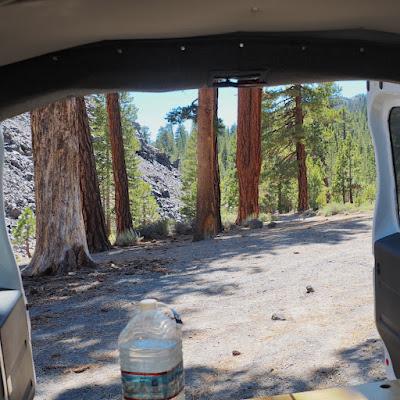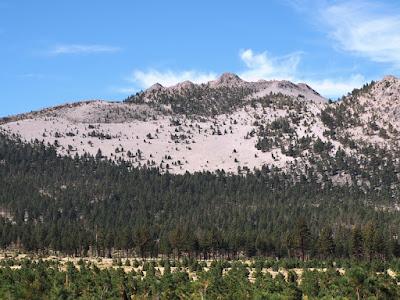What happed to that tree?
After a warm hike up Obsidian Dome we cooled off in the van, parked in the shade of pines. That's when I noticed the unusual tree nearby.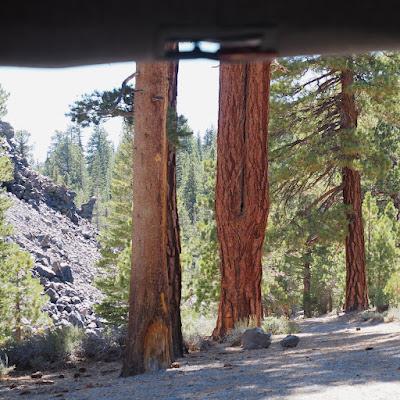
Note habitat and "soil".
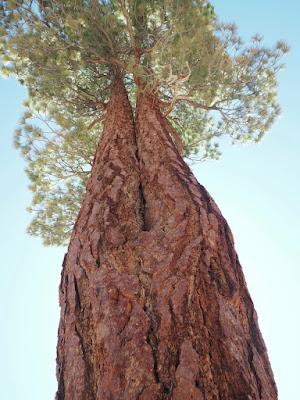
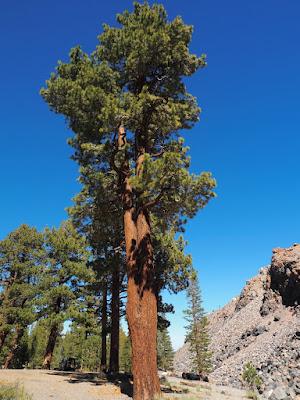
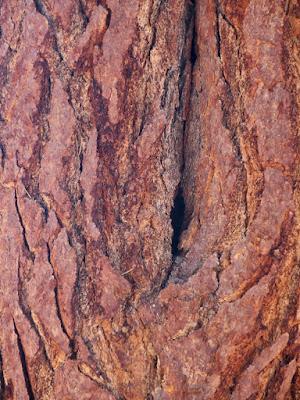
Last September I toured the Mono Basin and Long Valley Caldera—known among geologists for recent volcanic activity. This is a land of craters, domes, couleés, and coarse sterile soils made from searing ash, cinders, and rock fragments blasted out of the Earth. Jeffrey Pine is very common.
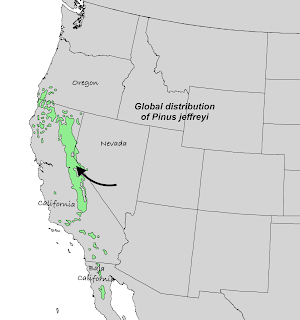
Pinus jeffreyi is mainly a California tree (source). Arrow points to area I visited.
In the Jeffrey Pine forests I saw, the ground was nearly barren aside from cones and dead needles. Soil was poorly developed, consisting of fragments of obsidian and pumice less than 10,000 years old ... and maybe much less (nearby Panum Volcano erupted just 600 years ago!).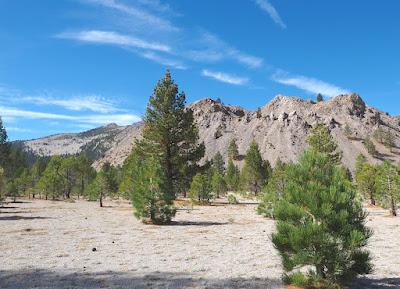
Jeffrey Pine on "pumice sand" below the Mono Craters.
Jeffrey Pines galore! Saplings in foreground, mature trees on lower slopes, scattered trees colonizing steep scree slopes on Crater Mountain.
Jeffrey Pines can grow on hospitable soils if given the chance, but they can't tolerate shading and root competition. This tree needs its space! It's known to be very cold hardy and drought tolerant—maybe it thrives on harsh sites simply because other trees can't.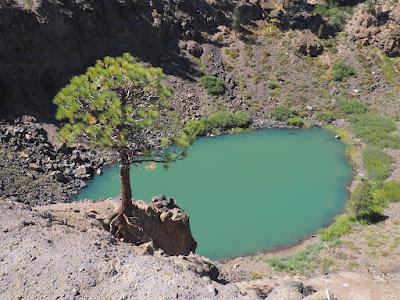
Young Jeffrey Pine on rim of southernmost Inyo Crater.
When I first met Jeffrey Pine decades ago, some botanists still considered it a variety of the common Pinus ponderosa. Wood of the two species is basically identical, and no distinction is made in commerce. But their cones, buds, bark, and needles differ, though sometimes subtly. Difference in habitat preference is more obvious.
Needles in threes, like Ponderosa Pine. On the tree they are said to be blue-green instead of yellow-green.
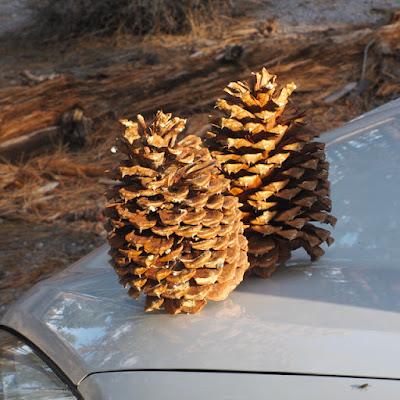
Cones of Jeffrey Pine can be much larger than those of the Ponderosa, and with many more scales.
Ponderosa Pine cones are 3–6 inches long and prickly (therefore "Prickly Ponderosa"). Those of the Jeffrey Pine are 6–12 inches long, and prickles on the tips of scales curve inward, making the cones easy to grasp.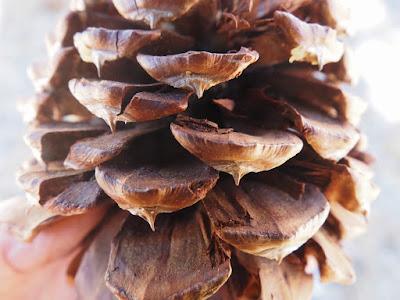
Scale prickles curved inward.
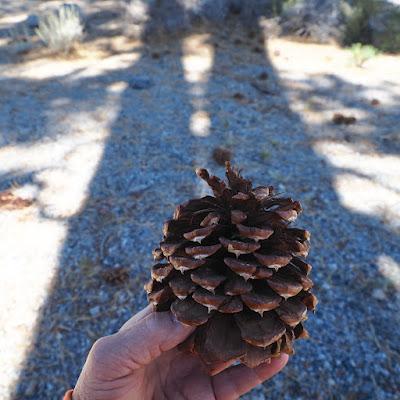
"Gentle Jeffreyi"
Sources
Gymnosperm Database. Pinus jeffreyi Greville et Balfour. Accessed October 2023.
Jenkinson JL. 1990. Pinus jeffreyi. Jeffrey Pine. in Burns, RM, and Honkala, BH. Silvics of North America. Vol. 1:359-369. USDA Forest Service.
